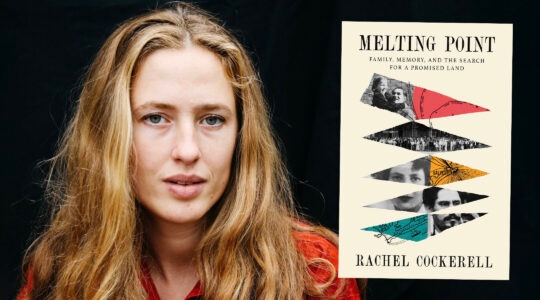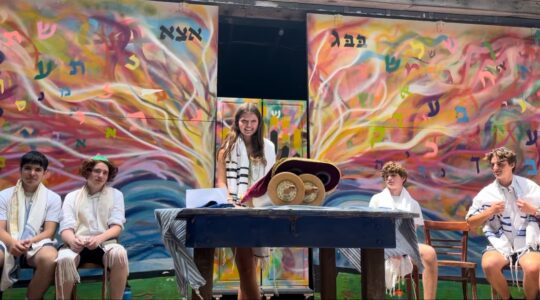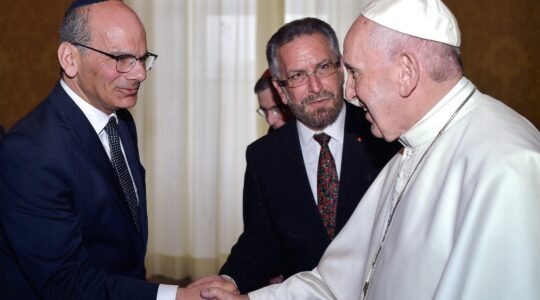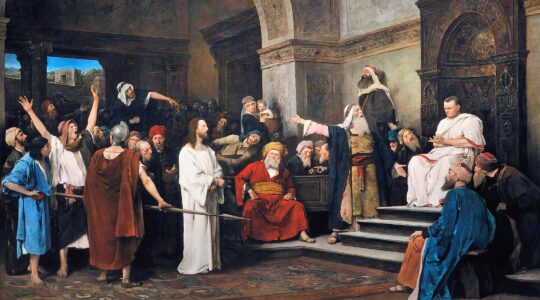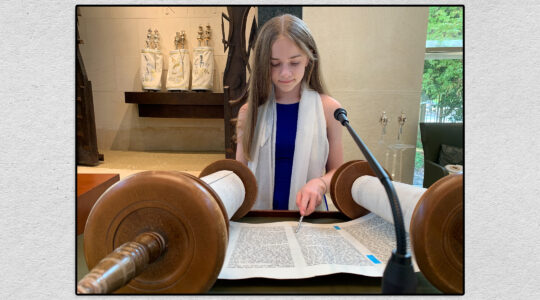NEW YORK (JTA) — Exactly 25 years ago on Dec. 6, more than 250,000 people gathered in Washington to call on the Kremlin to open the gates and let Soviet Jews emigrate. Freedom Sunday, as it came to be known, was the largest Jewish-organized gathering in American history.
The timing was not random.
Soviet President Mikhail Gorbachev was scheduled to meet with U.S. President Ronald Reagan the next day. It was to be the Soviet leader’s first official visit to the U.S.
In 1987, the number of Jews allowed to leave the USSR was pitifully low. Many Soviet Jews continued to languish in the Gulag for their activism, while some refusenik families were living in limbo behind the Iron Curtain for years counted in double digits.
I had the privilege of serving as the national coordinator of Freedom Sunday. It was an exhilarating and inspiring experience, but it had its challenges.
First, we had barely five weeks’ notice of Gorbachev’s arrival date to plan the event. The myriad details, big and small, made it a 24/7 job for the dedicated team in charge of assembling the pieces.
Second, the record attendance for a Jewish rally in Washington was 12,000 to 13,000 people. That was to support Israel in a defining time of war.
What would our number look like against that unimpressive backdrop? Could a poor turnout actually damage the Soviet Jewry cause by signaling to the Kremlin a low level of interest in the issue?
And third, despite the impression of a united Soviet Jewry movement, there were deep fissures between the so-called establishment and the activists — in typical Jewish fashion. Would everyone put aside their perceived differences and stand together as one for this single day?
Much credit goes to Natan Sharansky, the legendary prisoner of conscience who spent nine years in the Soviet camps and was released in 1986, for setting the organizers’ sights high. He insisted there be a mass rally and set the goal at 250,000 participants. Frankly, no one had a clue how we would attain the number, but Sharansky, given his courageous and principled history, was not easy to dissuade.
It was extraordinary to watch those five weeks of preparation unfold. Most striking was to see the response of Jewish communities across the United States, in Canada and in other countries. Reports would trickle in of one bus or planeload from a given city or college campus, then an amended report of two, or three, or four, or five.
Anecdotally, organizers also began hearing about those planning to show up who had never attended a protest rally but felt this was history in the making and wanted to be a part of it. It was especially noteworthy to see how many times people referred to the Holocaust, saying that American Jews needed to learn the lessons of history and speak out.
In the end, more than 250,000 people participated. The weather was brisk but sunny. We had no shortage of prominent speakers, including Vice President George H.W. Bush. Media coverage was extensive. Indeed, Voice of America broadcast the rally to Soviet listeners, which we later learned was a huge morale boost for Jewish listeners.
And as history has recorded, when Reagan and Gorbachev met in the Oval Office the next day, the American leader cited the rally as an unmistakable expression of public opinion and urged his Soviet counterpart to heed the message.
The rest, as they say, is history. The gates began to open ever wider, and more and more Soviet Jews left. Eventually, more than a million Russian-speaking Jews settled in Israel, profoundly transforming the country and revitalizing the Zionist spirit.
Unexpectedly, Germany became the fastest-growing Diaspora community in the world, with tens of thousands of new arrivals from the Soviet space. And the U.S. drew hundreds of thousands, to the point where more than 10 percent of the Jewish community hails from the Soviet Union or now, in one of my favorite sets of initials, the FSU.
Not only is this history important as a remarkable chapter in the Jewish journey that should be far better known, but also it can serve as a case study in what is possible, against all the odds, if only the Jewish people stand together, persevere and join forces with others of good will.
Dec. 6 is a date worth celebrating for what it achieved — and as a telling reminder of what is possible.
(David Harris is the executive director of the American Jewish Committee. He served as national coordinator for Freedom Sunday for Soviet Jewry, Dec. 6, 1987.)
JTA has documented Jewish history in real-time for over a century. Keep our journalism strong by joining us in supporting independent, award-winning reporting.
